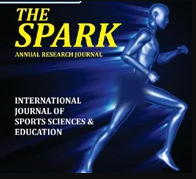SELF-EFFICACY AND SPORTS: PERCEPTION OF PUNJAB UNIVERSITY ATHLETES
Abstract
Self-efficacy is a person's judgment about being able to perform a particular task. It's a student’s belief on his/her capabilities to perform a particular activity. It is not necessary that if a person has a high self-efficacy in a certain area then he will have the same in other. Self-efficacy varies from person to person or task to task. Self-efficacy theory originated from social cognitive theory of Albert Bandura(1995), i.e. "The belief in one’scompetencies to execute the courses of action required to manageprobablecircumstances".It can also be said that it is the belief of a person that he can perform in a certain manner to achieve a certain goal. These beliefs are factors of how people think, behave and feel (Bandura, 1994).Â
References
Ajzen, I. (2002). Perceived behavioral control, Selfâ€Efficacy, locus of control, and the theory of planned Behavior. Journal of applied social psychology, 32(4), 665-683.
Bandura, A. (1982). Self-efficacy mechanism in human agency. American psychologist, 37(2), 122.
Bandura, A. (1986). Social foundations of thought and action: A social cognitive theory: Prentice-Hall, Inc.
Bandura, A. (1990). Perceived self-efficacy in the exercise of personal agency. Journal of applied sport psychology, 2(2), 128-163.
Bandura, A. (1994). Selfâ€efficacy: Wiley Online Library.
Bandura, A. (1995). Self-efficacy in changing societies: Cambridge university press.
Li, Y., & Huang, C. H. (2011). Influence of sports self-concept and self-efficacy on sports practice of university students. Journal of Sports Adult Education, 27(6), 32-35.
Maddux, J. E., & Rogers, R. W. (1983). Protection motivation and self-efficacy: A revised theory of fear appeals and attitude change. Journal of experimental social psychology, 19(5), 469-479.
Santrock, J. W. (2006). Human adjustment. McGraw-Hill.
Schunk, D. H., & Hanson, A. R. (1991). Peer models: Influence on children's self-efficacy and achievement. Journal of Educational Psychology, 77(3), 313.
Schunk, D. H., & Zimmerman, B. J. (1997). Social origins of self-regulatory competence. Educational psychologist, 32(4), 195-208.
Schwarzer, R. (2014). Self-efficacy: Thought control of action. Taylor & Francis.
Sherer, M., Maddux, J. E., Mercandante, B., Prentice-Dunn, S., Jacobs, B., & Rogers, R. W. (1982). The self-efficacy scale: Construction and validation. Psychological reports, 51(2), 663-671.
Sniehotta, F. F., Scholz, U., &Schwarzer, R. (2005). Bridging the intention–behaviour gap: Planning, self-efficacy, and action control in the adoption and maintenance of physical exercise. Psychology & Health, 20(2), 143-160.
Stipek, D. J. (2002).Motivation to learn: Integrating theory and practice. Allyn& Bacon.
Zimmerman, B. J. (2000). Self-efficacy: An essential motive to learn. Contemporary educational psychology, 25(1), 82-91.
Downloads
Published
How to Cite
Issue
Section
License
Submission of an original manuscript to the Journal will be taken to mean that it represents original work not previously published, that it is not being considered elsewhere for publication. And if accepted for publication, it will be published in print and online and it will not be published elsewhere.
The journal main policy reflects in its stance that the publication of scholarly research is exclusively meant to disseminate knowledge and not-for-purposes.








 Name of Journal:
Name of Journal: 